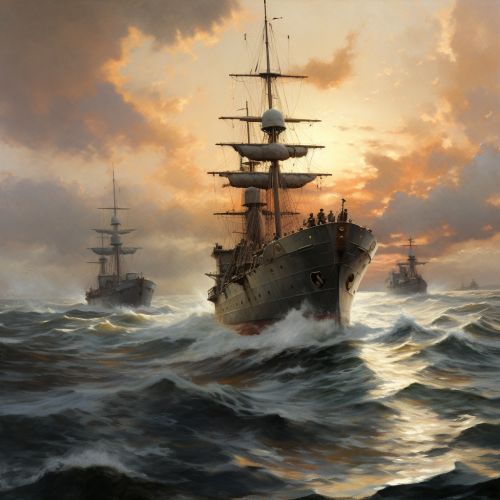Battle of Tsushima
Background
The Battle of Tsushima was a naval engagement that took place on 27-28 May 1905 between Russia and Japan during the Russo-Japanese War. This battle is particularly significant in naval warfare history as it marked the first time wireless telegraphy (radio) was used in a sea battle for operational command and control.
Prelude to the Battle
The Russo-Japanese War was triggered by both Russia and Japan's imperial ambitions over Manchuria and Korea. The war officially began on 8 February 1904, with a surprise attack by the Japanese navy on the Russian Pacific Fleet based at Port Arthur. The Battle of Port Arthur resulted in a Japanese victory, leaving Russia's Pacific Fleet severely weakened.


The Battle
The Battle of Tsushima began on 27 May 1905. The Russian fleet, under the command of Admiral Zinovy Rozhestvensky, was intercepted by the Japanese fleet, commanded by Admiral Tōgō Heihachirō, in the Tsushima Strait between Korea and southern Japan.
The Russian fleet consisted of 38 warships, including eight battleships, whereas the Japanese fleet was composed of 89 vessels, including four battleships. The Japanese fleet had a significant advantage in terms of speed, firepower, and operational range.
Aftermath
The Battle of Tsushima was a decisive victory for Japan. The Russian fleet was almost completely destroyed, with only three vessels managing to escape. The victory significantly shifted the balance of power in East Asia and marked the emergence of Japan as a major world power.
Significance
The Battle of Tsushima had far-reaching implications. It marked the first time an Asian power had defeated a European power in a major war. The battle also demonstrated the effectiveness of long-range naval gunfire and the importance of speed and maneuverability in naval warfare.
